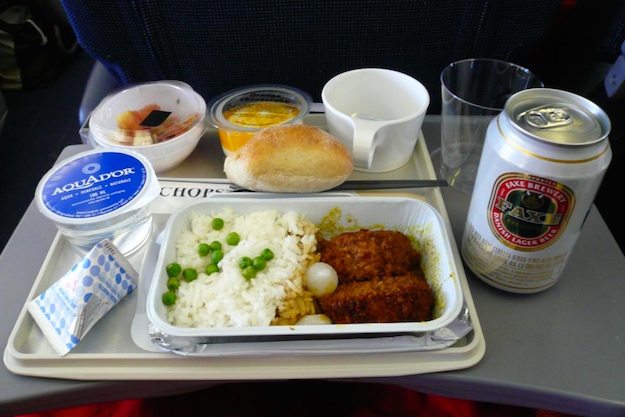Air travel in recent years has become a much more enjoyable experience. Not only are electronics no longer viewed as dangerous devices to be afraid of, but it’s becoming increasingly common to encounter planes with Wi-Fi connectivity and, if you’re lucky, TVs built right into the back of every headrest.
Despite such technological gains, airplane food remains one facet of the flying experience that has seemingly failed to evolve. As it turns out, there is a viable explanation behind the blandness and general ‘meh’ experience that one traditionally associates with eating at 25,000 feet.
DON’T MISS: Samsung Galaxy Note 5 review
Writing for The Kitchn, Janice Lawandi — a PhD chemist turned baker — explains that the humidity levels one typically encounters when flying can do a number on your taste buds.
“Depending on the flight’s altitude, the humidity levels can drop below 15 percent, which is less humid than a desert,” Lawandi writes. “With less moisture available and a low cabin pressure, taste buds are much less sensitive to salty and sweet. More importantly, odor receptors can’t do their job.”
As a result, Lawandi likens the eating experience when flying to eating when one has a cold or stuffy nose, which is to say it’s less than ideal.
Also contributing to airline food that tastes decidedly “off” is the noise of the aircraft itself. In a study published this past June in the Journal of Experimental Psychology, researchers found that individuals subjected to the simulated noise of an aircraft cabin had a tougher time recognizing ‘sweet’ flavors than individuals trying the same flavors in otherwise normal conditions.
Furthermore, there are cold hard logistical factors at play. When serving food to hundreds of passengers on a transoceanic flight, for instance, the food needs to be pre-cooked and re-heated. Needless to say, not every type of food can retain its full flavor profile in such a scenario. Additionally, planes aren’t necessarily equipped with the best cookware to begin with. On top of all this, remember that airlines are tasked with transporting you from point A to point B, not serving up delicious and unforgettable meals. Which is to say, airlines aren’t exactly spending top dollar on food and ingredients to begin with.
As a final point, an insightful Quora answer on this very topic relays that when airlines account for all types of dietary restrictions, bland meals are inevitable.
Once you take into account the immense variety of dietary restrictions that airplanes have to cater to: vegetarians, vegans, pescatarians, allergies of all different varieties, spice-haters, lactose intolerance, pregnant women, people with suppressed immune systems, etc and you start to realize just what type of situation these airlines are in: being something for everyone. Ultimately, you have to hit the lowest common denominator.
Thankfully, though, there does seem to be some hope for a more flavorful flying experience sometime off in the future. Believe it or not, but there is a lot of ongoing research exploring ways to make airline food even just a tad tastier. And who knows, perhaps its just a matter of time before multi-hour flights actually become something travelers look forward to as opposed an experience most people dread.




